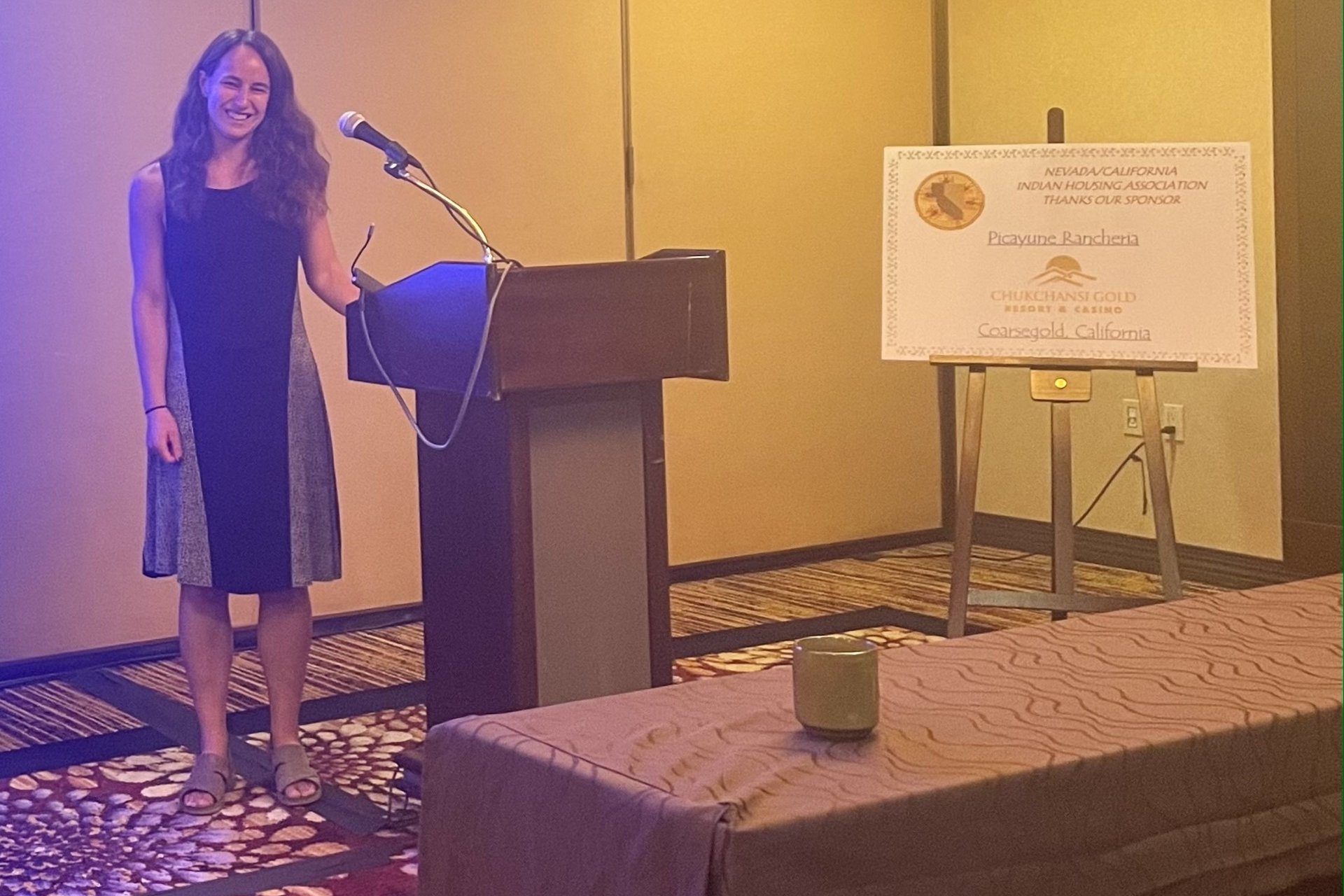Merritt Vassallo, BS '25, Mechanical Engineering
Undergraduate Fellow, Power and Risk Office
California Department of Water Resources

This summer, I’ve had the wonderful opportunity to work at the Power and Risk Office of the California Department of Water Resources (DWR). Through my work, I’ve been assisting DWR’s clean energy goals of decreased greenhouse gas emissions and increased renewable energy.
Recently, there have been proposals to develop solar over canals as an alternative to traditional ground-mounted solar. DWR is currently funding a pilot project over irrigation canals in the Turlock Irrigation District (TID). My project this summer is examining the feasibility of developing solar over the California Aqueduct—one of several aqueducts that make up the State Water Project. To clarify the terminology, aqueducts are specifically used to transport water for residential, agricultural, and industrial purposes. There are several potential benefits of developing solar over an aqueduct, such as decreased water evaporation, increased solar panel efficiency, decreased algae growth, and less competition for land. On the other hand, there are also several challenges, such as increased cost and the impact to daily operation and maintenance activities.
Within this, I’ve specifically examined two different solar designs. The first design is span solar, where the panels rest on a physical structure that goes over the width of the aqueduct. The second is floating solar, where the panels sit on plastic floats directly on the surface of the water. There are various pros and cons to each design, and the optimal design for a particular aqueduct depends on many factors such as width, environment, and more. It’s been an enjoyable challenge to bring all of these different elements together into one analysis.
In DWR, I’ve had the chance to speak to everyone from civil engineers in operation and maintenance to experts in algae and weed growth. I’ve also met with solar developers, to understand their experiences and thoughts about developing over an aqueduct. I’ve also enjoyed speaking with the TID project team, to learn about their plans for the upcoming pilot project.
In addition to meeting with so many incredible people, I’ve had the opportunity to go on site visits. This past week, some team members and I visited the DWR Delta Field Division offices near Tracy, California. We got to see the beginning sections of the California Aqueduct and Bethany Reservoir. We even went on a tour of the South Bay Pumping Plant, which pumps water from Bethany Reservoir to end users in the southern Bay Area. After spending so much time researching and reading about the California Aqueduct, it was amazing to see it in person and gain hands-on experience.
Throughout my project, I’ve truly enjoyed working at the intersection of both water and energy. I’m so grateful to my mentor, George Baldini, and everyone else who has taught and helped me. My work would not be possible without their support. I’ve had an amazing summer so far, and I’m looking forward to the rest!



